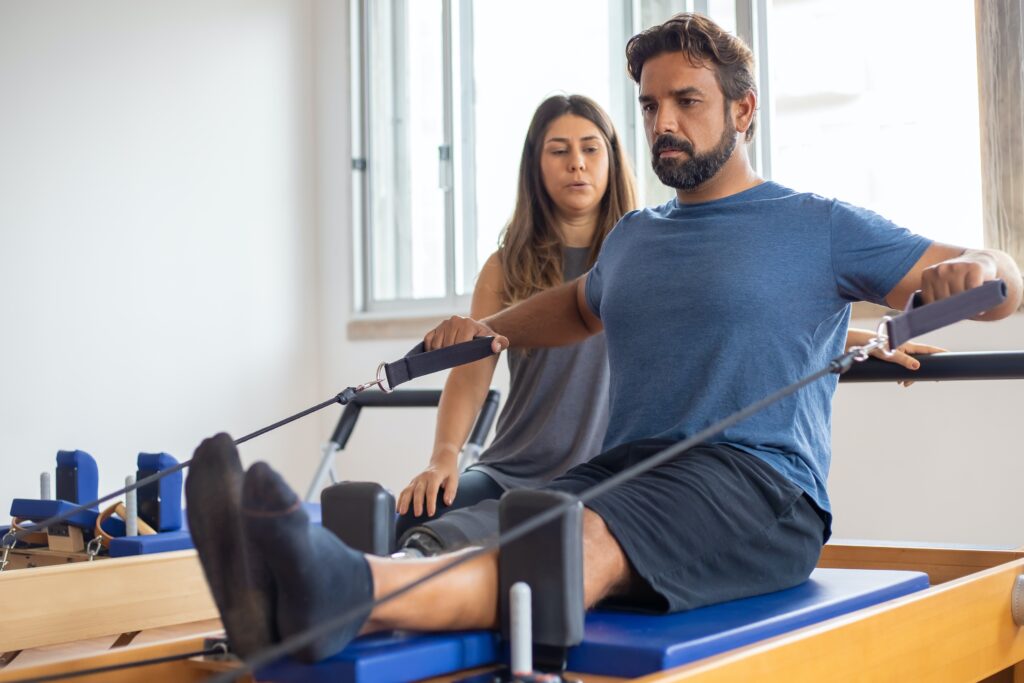
And How They Compliment Each Other
When it comes to treating musculoskeletal pain or injuries, two of the most common healthcare approaches are physical therapy and chiropractic. While both modalities focus on the body’s structure and function, they have distinct differences in their philosophies, techniques, and training. In this article, we will explore the differences between physical therapy and chiropractic and how they can complement each other in certain cases.
Physical Therapy:
Physical therapy (PT) is a healthcare profession that aims to restore, maintain, and improve patients’ physical function, mobility, and quality of life. PT interventions are based on scientific evidence and focus on a holistic approach to address the underlying causes of pain or dysfunction. Physical therapists (PTs) are licensed healthcare professionals who undergo extensive education and training, including a four-year doctoral degree, to diagnose and treat a wide range of conditions.
Physical therapists use various techniques to address musculoskeletal pain and injuries, such as:
- Therapeutic exercises: Exercises that are designed to improve strength, flexibility, endurance, and range of motion.
- Manual therapy: Hands-on techniques, such as massage, joint mobilization, and soft tissue mobilization, to improve tissue mobility and reduce pain.
- Modalities: Various treatments, such as ultrasound, electrical stimulation, and heat therapy, can help reduce pain and inflammation.
- Patient education: Information on posture, body mechanics, and injury prevention to improve overall function and reduce the risk of future injuries.
Chiropractic:
Chiropractic is a healthcare profession that focuses on the diagnosis and treatment of musculoskeletal conditions, particularly those that affect the spine. Chiropractors are licensed healthcare professionals who undergo extensive education and training to diagnose and treat conditions using non-surgical, drug-free approaches.
Chiropractors use a technique called spinal manipulation or chiropractic adjustment to treat musculoskeletal pain and injuries. This technique involves using hands or a small instrument to apply controlled force to the joints of the spine, with the aim of restoring joint mobility and reducing pain. Other techniques used by chiropractors include soft tissue therapy, mobilization, and exercises.
Complementing Each Other:
While physical therapy and chiropractic have different philosophies and approaches, they can complement each other in certain cases. For example:
- Collaborative Care: Both physical therapists and chiropractors may work together to develop a comprehensive treatment plan for patients with complex musculoskeletal conditions. This collaborative approach can improve patients’ outcomes and speed up recovery time.
- Integration of techniques: In some cases, physical therapists may use manual therapy techniques similar to those used by chiropractors, such as joint mobilization or soft tissue therapy. Similarly, chiropractors may incorporate exercises or modalities used in physical therapy into their treatment plans.
- Post-surgery: Patients who have undergone surgery may benefit from both physical therapy and chiropractic care to help manage pain, restore mobility, and prevent future injuries.
Physical therapy and chiropractic are two distinct healthcare professions that have different philosophies, techniques, and training. However, they can complement each other in certain cases to provide a more comprehensive and effective approach to musculoskeletal pain and injuries. If you are experiencing musculoskeletal pain or injury, it is always best to consult with a licensed healthcare professional to determine the best course of treatment for your specific needs. If you’re interested in learning more about our approach and the various services offered by Starkwood Chiropractic please feel free to contact us or schedule an appointment.

Request Appointment
Get Directions!
Hours
| Monday | 9:00 am – 6:00 pm |
|---|---|
| Tuesday | 9:00 am – 6:00 pm |
| Wednesday | 9:00 am – 6:00 pm |
| Thursday | 9:00 am – 6:00 pm |
| Friday | 9:00 am – 6:00 pm |
| Saturday | Closed |
| Sunday | Closed |
Areas We Serve
Portland Chiropractic Office: Located in the East Portland/Gresham area means our offices are easily accessible from I-205 and I-84 for your convenience. Our Portland chiropractic offices are conveniently located in Portland near Gresham. Our service area includes Portland, Gresham, Troutdale, Parkrose, Mount Tabor, Mill Park, Wood Village, Fairview, Clackamas, Rockwood and the rest of the Portland Metro Area including Vancouver, Washington. If you're in the area, just search "Chiropractors Near Me" and you'll find us.